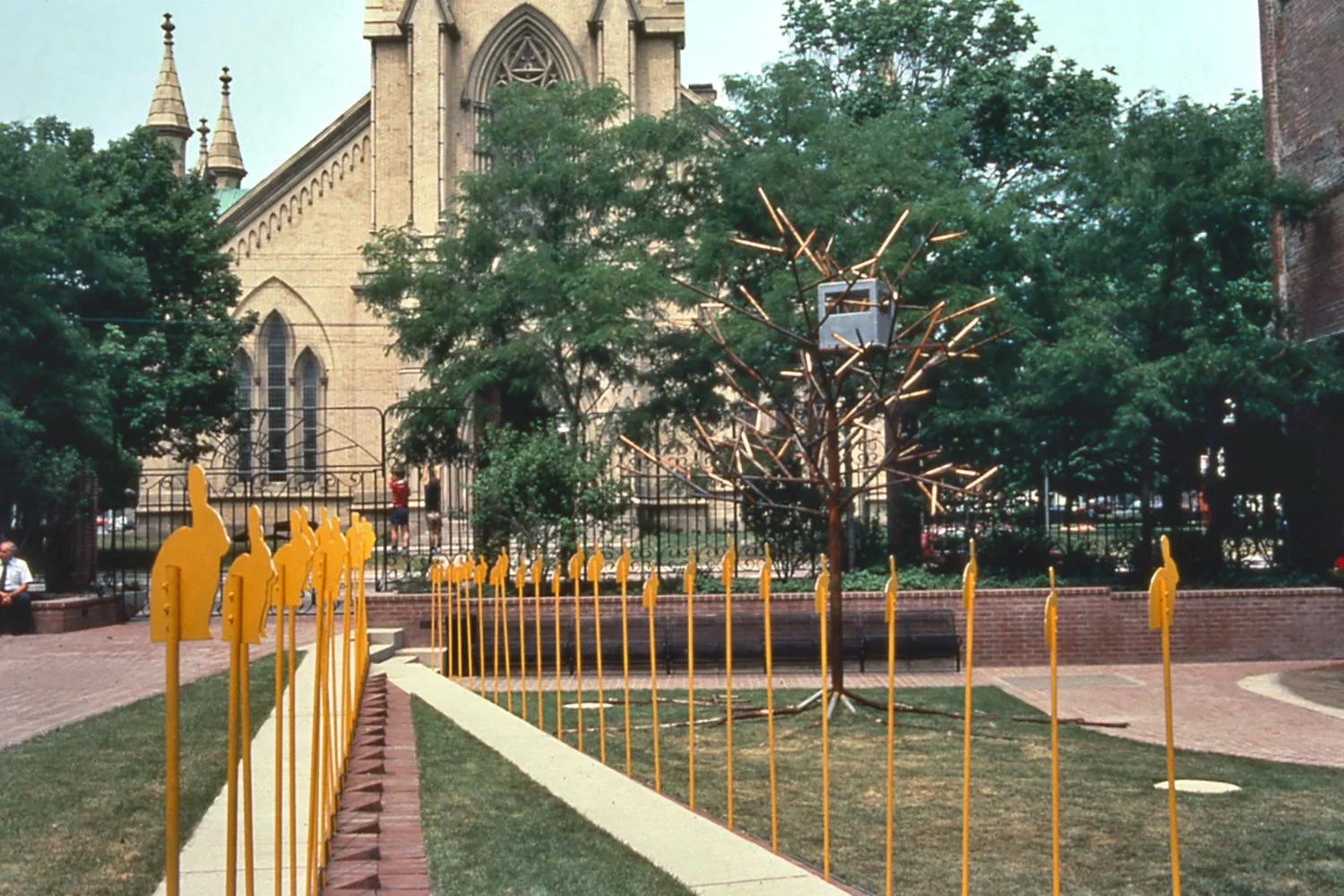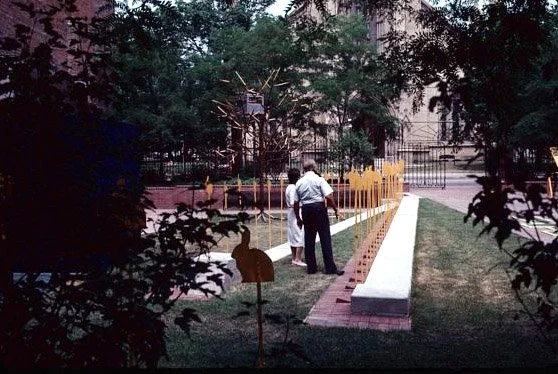Recess
Lee Paquette
May 12 – September 5, 1983
Artist Statement
This site-specific installation invites the viewer to participate in a colourful, playground-like setting where objects familiar to childhood become metaphors for structures and sensibilities that develop into our adult life.
Using variances in materials and scale, the work attempts to render familiar objects alien to our understanding and memory. The goal is to allow us to re-examine our relationship to these items and to question our attitudes and perceptions on a broader scale.
An oversized Teeter-totter requires us to directly encounter other people and to work with them to establish harmony and balance. The length of the structure and a 6' high vantage point when on the high end, acts as a visual link to the other elements.
Situated on the walkway is a long Hopscotch board that you can walk over or around or stop to play on its surface.
A Rabbit sits in an alert position waiting, perhaps to recall the strangeness a young child feels when experiencing the unknown for the first time.
Fifty-four sign-like Rabbit Cut-Outs, symbols of life and regeneration, have their face surfaces ground to a fur-like texture. Mounted on 5' high posts, they act as sign posts marking a pathway into the Garden's interior, directing our attention towards the most contemplative aspects of the installation.
On the grass is a large Seed Room and a tiny galvanized metal tree house perched in a steel tree. Reminiscent of a child's first private space, the tree house is fashioned like cardboard playhouses; reduced to a 2' square size, it remains inaccessible. The tree house is placed within the leafless branches of a tree made of steel pipe. The branch and root systems are both visible to the viewer and the natural elements where it will continue to rust while the house will remain untarnished.
Unlike these familiar structures, the Seed Room, the work's focal point, has a less specific place in our memory. Subsequently, it becomes a new and abstract experience; its human scale and swinging doors invite entrance. Once inside, we find a dark, enclosed space that functions literally as a recess. Maple weed cut-outs perforate the six plywood surfaces of the room, allowing light to enter and creating patterns of light and shadow. Stained sky blue on the outside and forest green on the inside, this shed-like room provides the interior space that the tree house does not. In this environment, the viewer can rest and feel rejuvenated, cut off from the noise and activity of the outside world.
Lee Paquette, Seed Room, 1983; wood, stain, paint; 8.5' x 6' x 17'
Teeter-totter, 1983; wood, steel, linoleum, paint; 3' x 3' x 16'
Steel Tree, 1983; steel; 14' x 8' x 8'
Treehouse, 1983; galvanized metal; 2' x 2' x 2'
Hopscotch, 1983, linoleum, 4’ x 16’
Rabbit Cut-Outs, 1982, aluminum, steel, yellow paint, 5’ x 8’ x 10“ (54 units)
Rabbit, 1982, wood and steel, 9’ x 3’ x 9’



